Introduction
Efficient and reliable heating systems are essential in hospitals to maintain a comfortable environment for patients, staff, and visitors.Hospital heating systems typically require specialized equipment to meet the unique demands of the healthcare setting.In this article, we will explore the various types of heating system equipment commonly used in hospitals.These systems are designed to meet the specific heating requirements of hospitals, ensuring adequate warmth, ventilation, and indoor air quality for patient care and comfort.
1.Boilers
Importance of Boilers in Hospital Heating Systems
Boilers serve as the backbone of hospital heating systems due to their ability to generate hot water or steam for distribution throughout the facility. They play a crucial role in maintaining the required temperature in patient rooms, operating theaters, laboratories, and other critical areas. Reliable and efficient boiler operation is vital for the comfort of patients and the smooth functioning of medical equipment and processes.
Functions of Boilers in Hospital Heating Systems
Heat Generation: Boilers produce heat by burning fuel, typically natural gas, oil, or biomass. This heat is transferred to water, generating hot water or steam that is used for space heating, sterilization, laundry services, and other hospital processes that require heat.
Heat Distribution: Boilers distribute the generated heat through a network of pipes to different areas within the hospital. This includes heating coils in patient rooms, radiators in common areas, and heat exchangers for specialized applications. Proper distribution ensures consistent and controlled heating throughout the facility.
Temperature Control: Boilers play a crucial role in maintaining precise temperature control within the hospital. Advanced boiler systems incorporate control mechanisms that allow for accurate adjustments to match specific requirements, ensuring comfort for patients and optimizing energy efficiency.
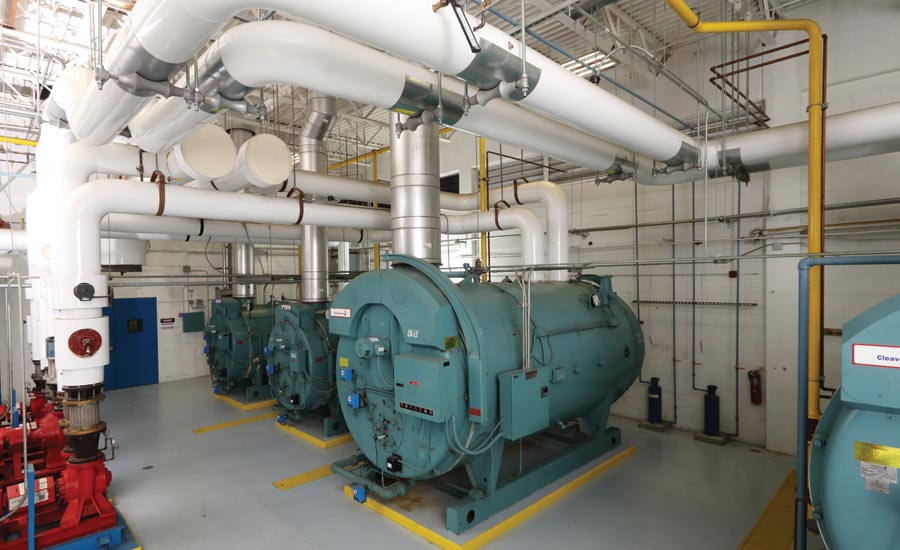
Types of Boilers Used in Hospital Heating Systems
Fire-Tube Boilers: Fire-tube boilers are commonly used in hospital heating systems due to their simplicity and versatility. They consist of a large cylindrical vessel with fire tubes passing through it. Hot gases from the combustion process flow through the tubes, transferring heat to the water surrounding them.
Water-Tube Boilers: Water-tube boilers are another type used in hospitals, particularly for larger facilities. They operate by circulating water through a network of tubes while hot gases flow around them. Water-tube boilers are known for their high efficiency and ability to handle varying load demands.
Condensing Boilers: Condensing boilers are gaining popularity in hospital heating systems due to their exceptional energy efficiency. They recover heat from the flue gases, condensing the water vapor and extracting additional heat from the combustion process. Condensing boilers can achieve higher efficiency levels, resulting in reduced energy consumption and operating costs.
Biomass Boilers: Some hospitals are adopting biomass boilers as a sustainable heating solution. Biomass boilers use organic materials such as wood pellets, agricultural residues, or energy crops as fuel. These boilers offer a renewable alternative, contributing to carbon footprint reduction and environmental sustainability.
2.Heat Exchangers
Importance of Heat Exchangers in Hospital Heating Systems
Heat exchangers are vital for hospital heating systems as they enable the recovery and utilization of waste heat. By transferring heat from high-temperature streams to lower-temperature streams, heat exchangers help reduce energy consumption and associated costs. Hospitals can benefit from improved energy efficiency, reduced carbon footprint, and enhanced sustainability by incorporating heat exchangers into their heating systems.
Functions of Heat Exchangers in Hospital Heating Systems
Heat Recovery: Heat exchangers recover waste heat from various sources within the hospital, such as exhaust gases from boilers or process equipment. They capture the thermal energy that would otherwise be lost and transfer it to another fluid, which can be utilized for space heating, water heating, or other heating applications.
Efficiency Enhancement: Heat exchangers improve the overall efficiency of hospital heating systems by preheating the incoming fluid using the recovered heat. This reduces the energy required to achieve the desired heating levels, resulting in lower operational costs and improved sustainability.
Temperature Control: Heat exchangers contribute to precise temperature control within hospital heating systems. They can adjust the temperature of the fluid being heated or cooled, ensuring optimal conditions for different areas, such as patient rooms, operating theaters, and critical care units.
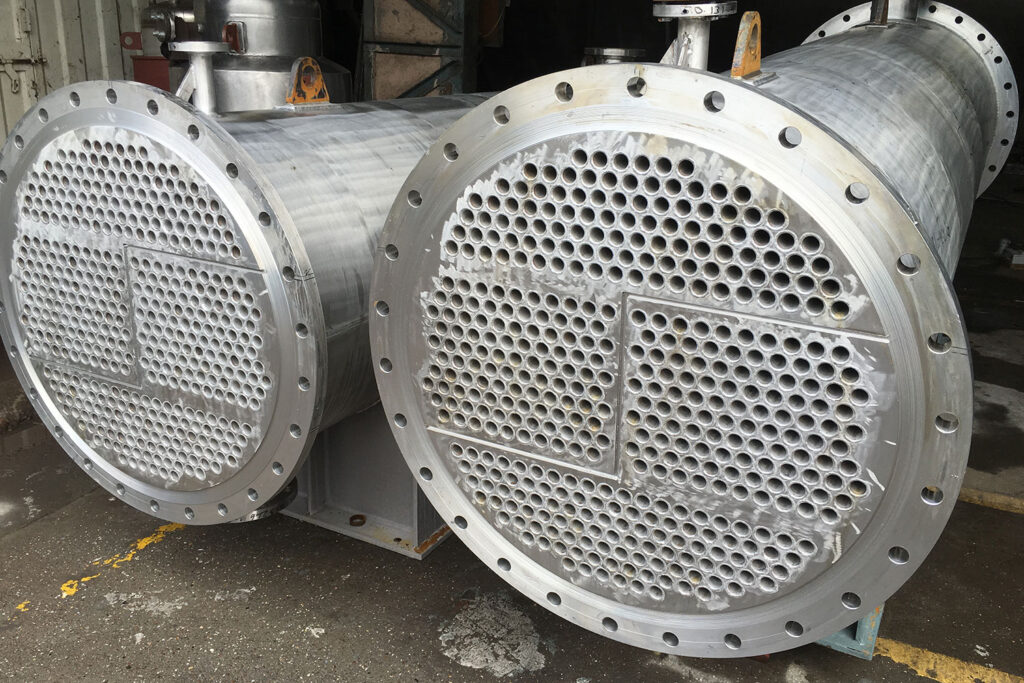
Types of Heat Exchangers Used in Hospital Heating Systems
Shell and Tube Heat Exchangers: Shell and tube heat exchangers are the most common type used in hospital heating systems. They consist of a bundle of tubes housed within a cylindrical shell. Hot fluid flows through the tubes, while a different fluid circulates around the tubes, facilitating heat transfer. Shell and tube heat exchangers are versatile, robust, and suitable for a wide range of applications.
Plate Heat Exchangers: Plate heat exchangers consist of a series of metal plates with channels for fluid flow. The hot and cold fluids flow through alternate channels, allowing efficient heat transfer. Plate heat exchangers are compact, provide a large heat transfer surface area, and are ideal for applications with space constraints.
Finned Tube Heat Exchangers: Finned tube heat exchangers enhance heat transfer efficiency by incorporating fins on the tube surfaces. The fins increase the heat transfer area and facilitate improved heat exchange between the fluids. Finned tube heat exchangers are commonly used when air is involved in the heating process, such as in air handling units or ventilation systems.
Heat Recovery Ventilators: Heat recovery ventilators (HRVs) are specialized heat exchangers used to recover heat from the exhaust air and transfer it to the incoming fresh air. HRVs help maintain a healthy indoor environment while minimizing energy loss. They are particularly useful in hospitals where ventilation is critical for air quality control.
3.Air Handling Units (AHUs)
Functionality of Air Handling Units
Air Handling Units are responsible for treating the air supplied to different areas within a hospital. They perform several essential functions, including:
a) Air Filtration: AHUs remove dust, allergens, pathogens, and other contaminants through various filtration stages, safeguarding indoor air quality and reducing the risk of airborne infections.
b) Heating and Cooling: AHUs are equipped with heating and cooling coils to maintain a comfortable temperature range throughout the hospital, regardless of external weather conditions.
c) Humidification and Dehumidification: AHUs regulate humidity levels within specified ranges to prevent the growth of mold, maintain patient comfort, and protect sensitive equipment.
d) Air Distribution: AHUs distribute conditioned air through a network of ducts, ensuring proper ventilation and consistent air supply to all areas of the hospital.
e) Energy Recovery: Some advanced AHUs incorporate energy recovery mechanisms that extract heat from the exhaust air and transfer it to the incoming fresh air, improving energy efficiency.
Indoor Air Quality and Infection Control
In hospitals, where patients with weakened immune systems are present, maintaining high indoor air quality is paramount. AHUs contribute significantly to this by removing contaminants, including airborne pathogens, through efficient filtration systems. High-performance filters, such as HEPA filters, are commonly used in hospital AHUs to capture even the smallest particles and microorganisms, reducing the transmission of infectious diseases.
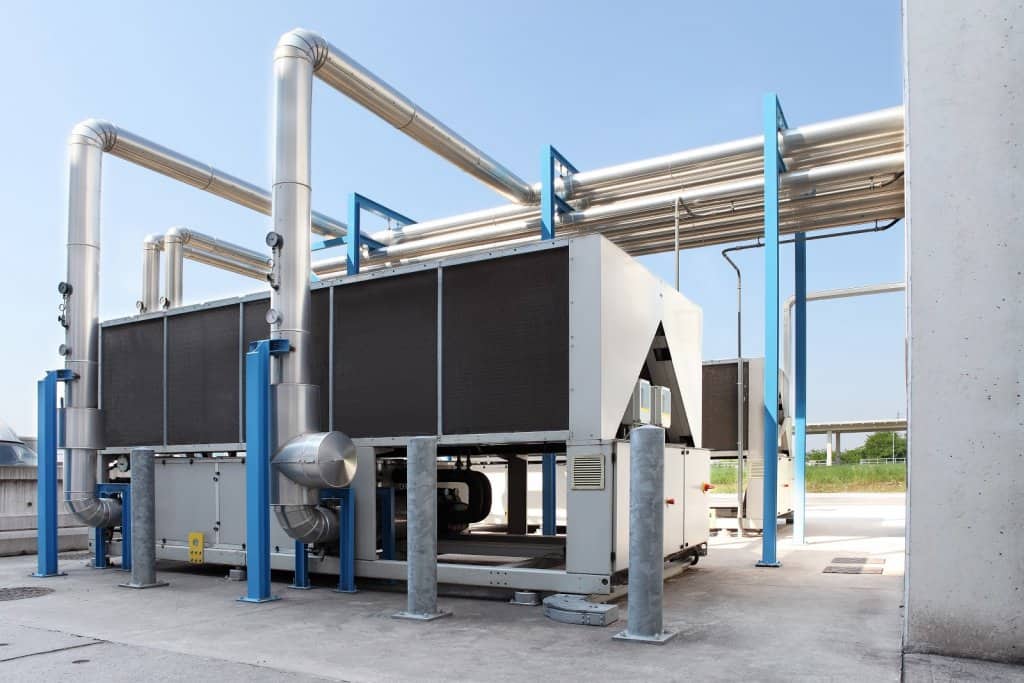
Energy Efficiency and Cost Savings
Hospital heating systems are typically large and consume a significant amount of energy. AHUs equipped with energy recovery systems help minimize energy consumption by utilizing the thermal energy present in the exhaust air. This heat transfer process reduces the load on heating systems, resulting in lower energy bills and reduced environmental impact.
Maintenance and Monitoring
Regular maintenance and monitoring of AHUs are essential to ensure optimal performance and prevent any potential issues. Routine inspections, filter replacements, and cleaning of coils and ductwork are necessary to maintain proper functionality. Additionally, modern AHUs often feature advanced monitoring systems that provide real-time data on temperature, humidity, air pressure, and filter conditions, enabling proactive maintenance and troubleshooting.
4.Heat Pumps
Functions of Heat Pumps in Hospital Heating Systems
Heat Transfer: Heat pumps transfer heat from one location to another using a refrigeration cycle. They extract heat from a low-temperature source, such as ambient air, ground, or water, and transfer it to a higher-temperature space within the hospital. This allows for efficient heating during colder months.
Cooling: Heat pumps can reverse their operation to provide cooling when required. By extracting heat from indoor spaces and releasing it to the outside, heat pumps help maintain comfortable temperatures in areas such as operating rooms, laboratories, and server rooms.
Energy Efficiency: Heat pumps are known for their high energy efficiency. They can deliver up to four times the amount of heat energy compared to the electrical energy they consume. This efficiency results in reduced energy consumption, lower operating costs, and a smaller carbon footprint for hospitals.
Types of Heat Pumps Used in Hospital Heating Systems
Air-Source Heat Pumps: Air-source heat pumps extract heat from the ambient air and transfer it indoors. They are easy to install and suitable for hospitals located in areas with moderate climates. Air-source heat pumps can provide both heating and cooling, offering year-round comfort and energy savings.
Ground-Source Heat Pumps (Geothermal): Ground-source heat pumps utilize the relatively constant temperature of the ground or a water source, such as a nearby lake or well, to extract or dissipate heat. They are highly efficient and suitable for hospitals with adequate land or water resources. Ground-source heat pumps offer long-term cost savings and are environmentally friendly.
Water-Source Heat Pumps: Water-source heat pumps extract heat from or dissipate heat to a water source, such as a river or pond. They are commonly used in hospitals located near a reliable water supply. Water-source heat pumps provide efficient heating and cooling, contributing to energy savings and sustainability.
Hybrid Heat Pumps: Hybrid heat pumps combine the functionality of a heat pump with a supplementary heating source, such as a gas or oil-fired boiler. This hybrid system allows hospitals to optimize efficiency by utilizing the heat pump during milder weather and switching to the supplementary heater during extreme temperatures or peak demand periods.
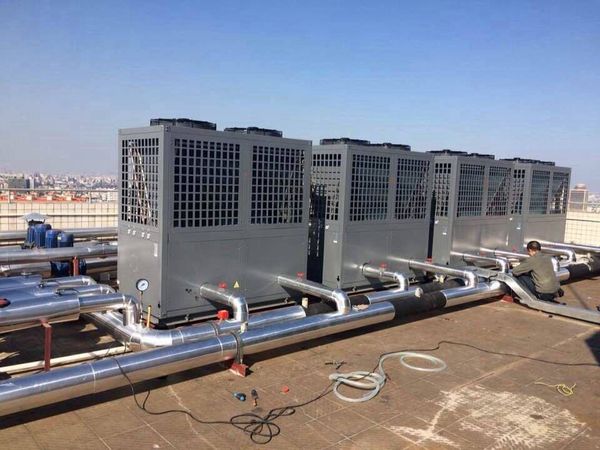
Benefits of Heat Pumps in Hospital Heating Systems
Versatility: Heat pumps offer both heating and cooling capabilities, providing year-round comfort and climate control for hospitals.
Energy Efficiency: Heat pumps are highly energy efficient, reducing operational costs and promoting sustainability.
Environmental Friendliness: Heat pumps produce fewer greenhouse gas emissions compared to traditional heating systems, contributing to a greener and healthier environment.
Cost Savings: Heat pumps can significantly reduce energy consumption, resulting in long-term cost savings for hospitals.
5.Underfloor Heating
Efficient and Uniform Heat Distribution
Underfloor heating systems offer several advantages over traditional heating methods.By radiating heat from the floor upwards, they provide a more uniform distribution of warmth throughout the space.This even distribution eliminates cold spots and drafts, creating a comfortable environment for patients and staff.Additionally, underfloor heating minimizes heat loss and ensures optimal thermal comfort by utilizing the principle of radiant heat transfer.
Enhanced Energy Efficiency
Energy efficiency is a critical factor in hospital heating systems.Underfloor heating systems excel in this aspect, as they operate at lower temperatures compared to conventional heating systems, such as radiators.The lower operating temperatures not only reduce energy consumption but also allow compatibility with renewable energy sources, such as heat pumps.By optimizing energy usage, underfloor heating systems contribute to cost savings and environmental sustainability.
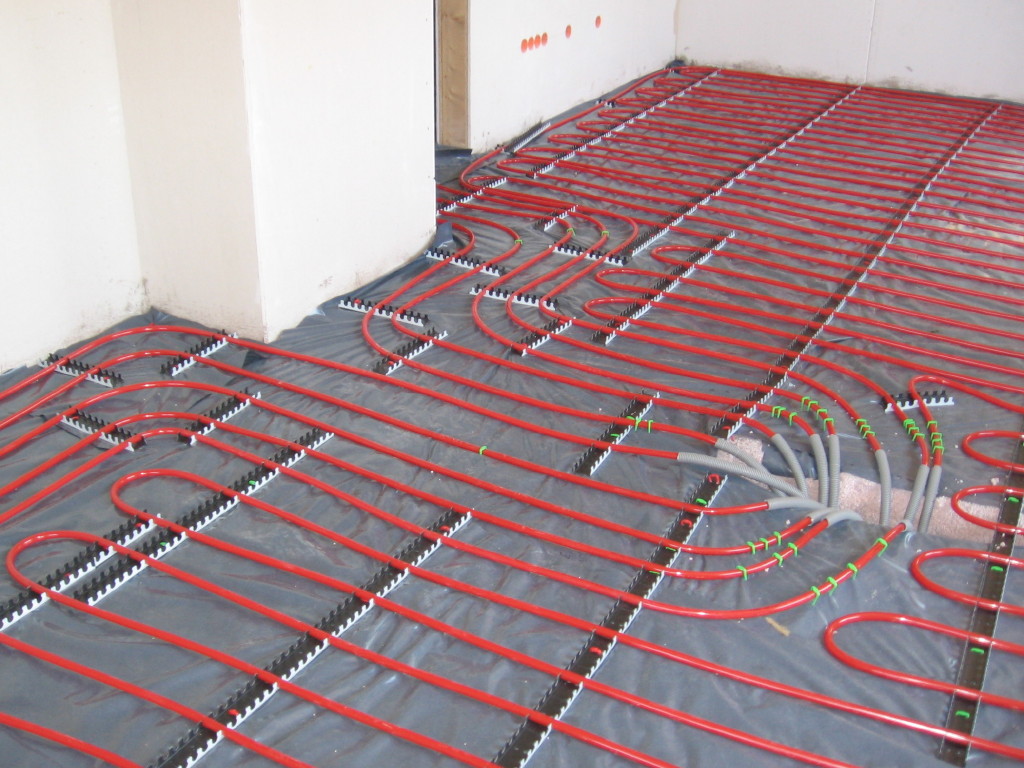
Improved Indoor Air Quality
Hospital environments require stringent measures to maintain indoor air quality.Traditional heating systems, such as radiators, can lead to air circulation that promotes the spread of airborne contaminants.Underfloor heating systems, on the other hand, minimize air movement, reducing the suspension of dust, allergens, and pathogens.This feature contributes to a cleaner and healthier indoor environment, particularly beneficial for patients with respiratory conditions or compromised immune systems.
Safety and Accessibility
Underfloor heating systems offer additional safety benefits in hospital settings.Unlike radiators or exposed heating elements, underfloor heating is hidden beneath the floor surface, eliminating the risk of accidental burns or injuries.This feature is especially crucial in areas where vulnerable patients, such as children or the elderly, may come into direct contact with heating elements. Furthermore, underfloor heating systems create a clutter-free environment, allowing unobstructed movement for patients, staff, and medical equipment.
6.Thermal Storage Systems
Energy Management and Load Shifting
Thermal storage systems allow hospitals to manage their energy consumption more effectively. During periods of lower energy demand or off-peak hours, excess heat energy can be stored in thermal storage units, such as tanks or phase change materials.This stored energy can be utilized during peak hours when the heating demand is higher.By shifting the load and utilizing stored heat, hospitals can reduce their reliance on costly peak-hour energy sources and improve overall energy efficiency.
Enhanced Heating Performance
Thermal storage systems help improve the heating performance in hospitals.By storing excess heat energy, these systems ensure a constant and uninterrupted heat supply during peak demand periods. This ensures a consistent and comfortable temperature throughout the facility, even during times when the heating load exceeds the capacity of the heating system. Additionally, thermal storage systems minimize temperature fluctuations and reduce the risk of overheating or underheating, providing a stable and optimal environment for patients and staff.
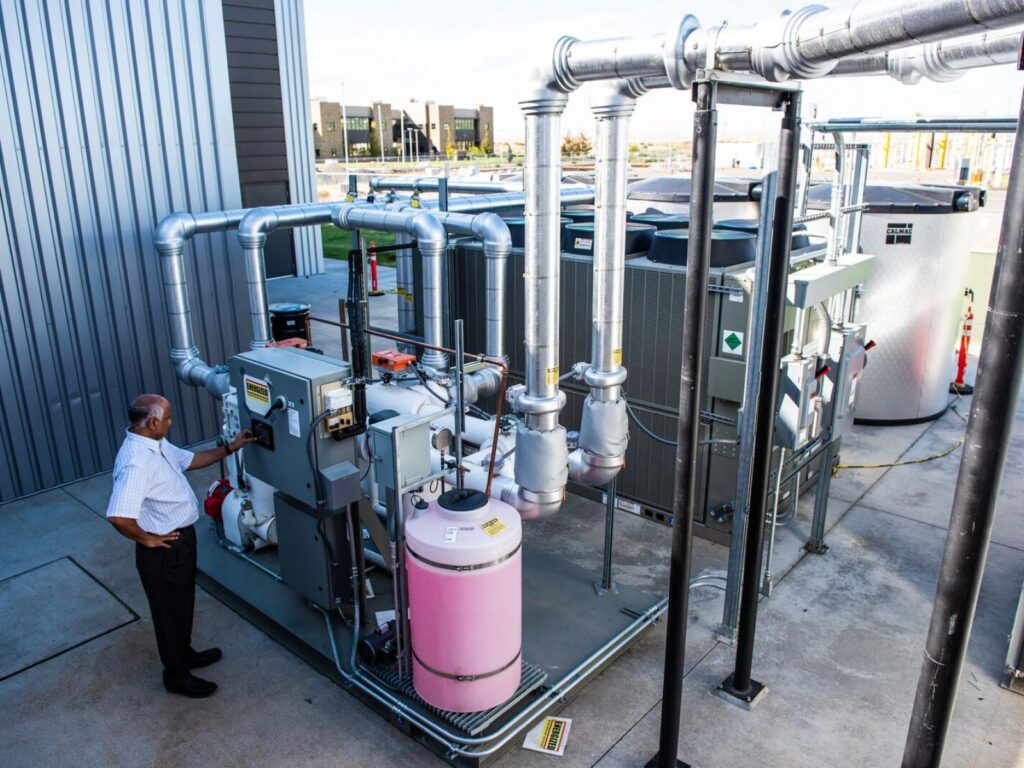
Integration with Renewable Energy Sources
Hospitals are increasingly embracing renewable energy sources, such as solar or geothermal systems, to reduce their carbon footprint.Thermal storage systems complement these renewable energy sources by storing excess heat generated during peak solar or geothermal energy production.This stored heat can then be utilized during periods when renewable energy generation is insufficient.Integrating thermal storage with renewable energy sources enables hospitals to maximize their utilization of clean and sustainable energy, further reducing their environmental impact.
Operational Flexibility and Redundancy
Thermal storage systems provide hospitals with operational flexibility and system redundancy. By storing excess heat energy, hospitals can better manage sudden changes in heating demand, such as during extreme weather conditions or emergencies.This flexibility ensures that the heating system can quickly respond to increased demand without overloading the primary heating equipment.Moreover, thermal storage systems act as a backup heat source, ensuring uninterrupted heating in case of equipment failure or maintenance requirements.
Cost Savings and Environmental Impact
Efficient energy management offered by thermal storage systems translates into significant cost savings for hospitals.By utilizing stored heat during off-peak hours, hospitals can take advantage of lower electricity rates, resulting in reduced energy bills.Additionally, the optimized energy usage contributes to a reduced carbon footprint, aligning with hospitals’ sustainability goals and environmental responsibilities.
Conclusion
Hospitals require specialized heating system equipment to maintain a comfortable and controlled environment. Boilers, heat exchangers, radiators, convectors, air handling units, heat pumps, underfloor heating, and thermal storage systems are among the key components used in hospital heating systems. By selecting and integrating the right equipment, hospitals can ensure reliable and efficient heating while prioritizing the comfort and well-being of patients, staff, and visitors.
Why Choose Us?

CNMEDITECH is dedicated to the long-term research of the medical equipment market. Our mission is “People oriented and win-win strategy,Matching the real needs of the region with a focus on human health,To be the world’s first-class medical field solution expert”.We have been manufacturing high-quality medical device products for more than ten years.
We have built our reputation on delivering quality healthcare solutions on time and on budget.All our products comply with international health and safety regulations and all products come with a warranty.
Are you still worrying about your customer’s product needs?Are you still angry that the product is expensive? We have various medical equipment and support personalized product customization.
Our company has many styles to choose from.In addition, we have high-quality pre-sales consulting guidance and professional after-sales service, all to meet your needs.
Whether it is a cost-effective or high-end product, there will always be something suitable for you.If you have any needs for products, you can ask us, our factory will meet your needs as soon as possible, and we will make every effort to provide you with solutions.Feel free to send us your inquiries.








